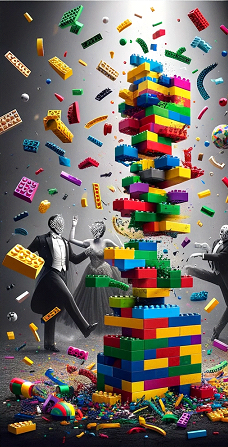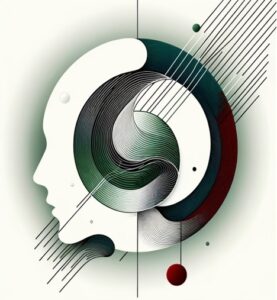Self Improvement Sagas – Mental Health Awareness Month Bonus Essay
Recovery from depression is often misunderstood. While much focus is placed on the crisis period—its symptoms, its disruption, its emotional intensity—less is said about what happens when that intensity fades. And yet, many individuals find themselves unprepared for what comes next: not joy or vitality, but something more subtle, and often, more confusing—boredom.
After the fog lifts and the urgency fades, what remains may feel flat. Routine takes over. Days feel repetitive. Emotions feel muted. There is no obvious distress, but also no excitement.
This experience is common—and clinically meaningful. It represents a nervous system entering stability, not stagnation. But for those accustomed to intensity, this shift can be disorienting.
Adjusting to Emotional Stability
When someone has lived with chronic depression, trauma, or nervous system dysregulation, emotional extremes can become the baseline. Crisis creates clarity. Emotional volatility feels familiar.
When that state resolves, the absence of crisis may be interpreted as a lack of direction or even emotional dullness. Clients in this phase often express:
“I feel strangely bored all the time.”
“This version of being okay doesn’t feel like I thought it would.”
“I kind of miss the sense of urgency. At least I knew what to do.”
These are not signs of failure. They are signs that the individual is entering a new emotional climate—one their nervous system may not yet recognize as safe or sustainable.
Why Boredom Is Clinically Significant
Boredom during recovery may signal that:
-
The client is no longer operating from survival mode.
-
The nervous system is shifting out of hypervigilance or emotional exhaustion.
-
A new level of internal regulation is beginning to form.
While the absence of distress is progress, it can feel emotionally flat, especially to those who previously used urgency, pain, or intensity to navigate life.
Recovery often includes a phase where the absence of suffering does not yet feel like wellness.
Stability, at first, may be misread as dullness.
Boredom is not always a problem. In recovery, it can be a developmental milestone—a transition into a new stage of healing where identity is no longer defined by struggle.
How to Work With This Phase
For clients (or clinicians supporting them), here are a few ways to understand and work through this stage of recovery:
1. Avoid Reintroducing Chaos
Be mindful of the impulse to create emotional intensity—through overcommitting, conflict, or dramatic shifts—just to feel something. These behaviors may reintroduce chaos, not connection.
2. Reintroduce Purpose Gradually
Rather than expecting immediate joy, encourage curiosity. Meaning and interest may need to be rebuilt slowly through small, sustainable activities or connections.
3. Track Subtle Changes
Instead of waiting for major emotional shifts, begin to notice smaller signals of stability:
-
Feeling calm while completing a routine task
-
Enjoying neutral social interaction without overthinking
-
Resting without guilt or hypervigilance
These changes are evidence that the nervous system is no longer organized around danger, distress, or dysfunction.
Conclusion: Stability Is a Milestone, Not a Plateau
There is no dramatic turning point in this stage of healing. No climax. No clear arrival. But there is progress.
When your system no longer revolves around crisis, you begin learning how to live—not just cope.
If you’re feeling underwhelmed in your recovery, remind yourself: this isn’t a sign that healing has stalled. It’s a sign that your system is adjusting to something new—stability.
Stability isn’t exciting, but it is essential.
It’s what allows for sustainable choice, meaningful engagement, and the return of self-direction over time.
You are not broken because life feels quiet.
You are learning how to live without needing to suffer in order to feel real.
And that is progress worth recognizing.



